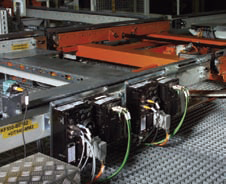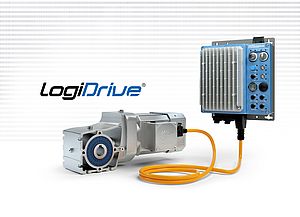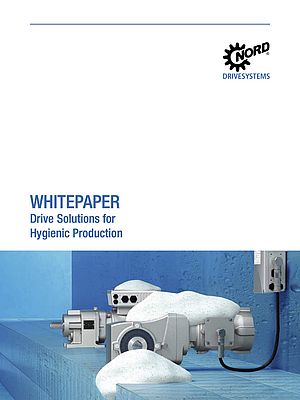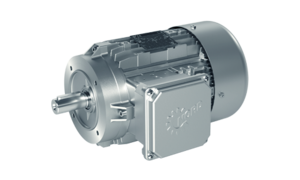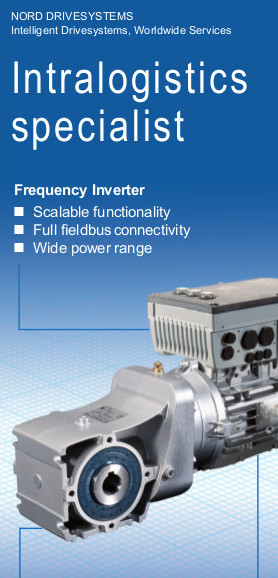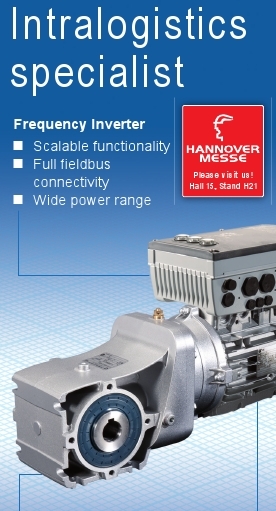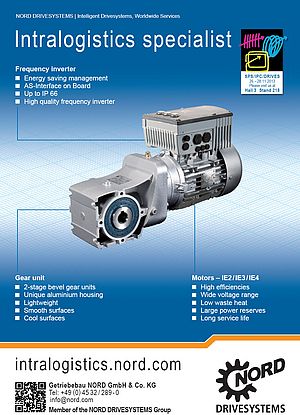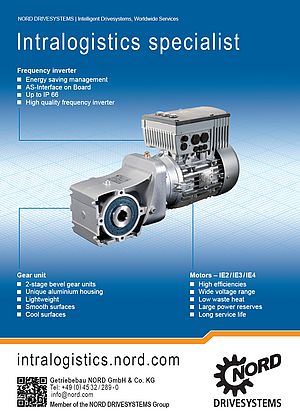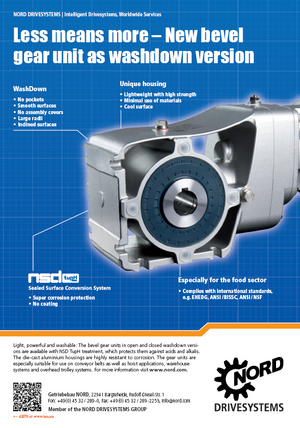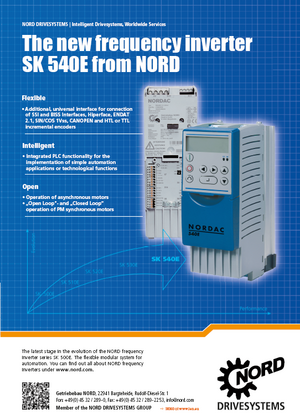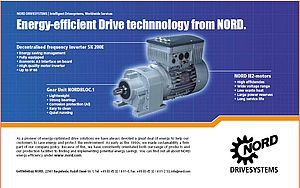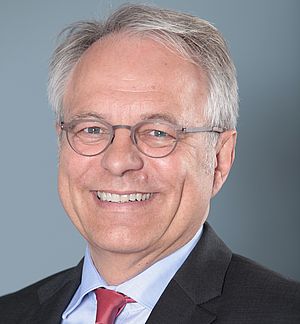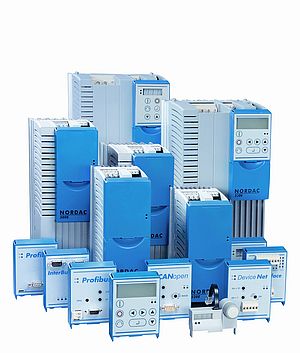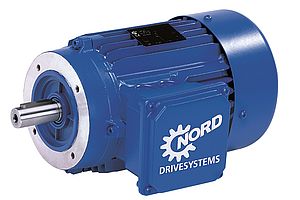Few people are visible in this large and highly automated production facility. Instead, large robot arms reach into special containers and remove sheet metal parts. Further along the production line, sparks fly where the welding robots do their work. The article being produced slowly takes shape: doors for Audi's A4 and A5 models.
The parts are routed along a chain conveyor belt system powered by Nord drives. This branches into loading and unloading sections, which convey the vehicle component containers from work station to station. The system is equipped with lifting equipment, transport carriages, and rotating and elevating platforms. The complete system is driven by Nord components - mainly bevelledgear drives.
The chain conveyor belt and the rotary units for direction changes are controlled by almost 400 of Nord's decentralised field I/O modules. These were specified as they are optimally suited for decentralised operation and are particularly service-friendly. Each node consists of a Nord SK 300E frequency inverter drive with an I/O unit that has a repair switch and M12 connector components for connecting with process sensors and actuators. The motor is connected to the field I/O module using Harting connectors, so that it — and the inverter drive — can be replaced quickly if necessary. The field I/O modules communicate with the master controller via Interbus. The inputs of the field I/O modules enable, amongst other things, remote reading of the proximity switches for optical position monitoring of the containers.
In addition, the system also uses decentralised reverse starters, which can be controlled via the outputs of the field I/O module. The reverse starters take over functions such as the centering of the containers for position-accurate transfer to the robots. They move the elevating platforms in the transfer section to the forklifts and lock the load in lift equipment.
The conveyor belt system is equipped with seven lift stations, which are controlled by frequency inverter drives from Nord's SK 700E range. Communication with the controller is again implemented via Interbus. In lift stations that operate over more than two levels, the inverter is equipped with positioning control which takes over the dynamic positioning. The positions are optoelectronically sensed via a bar code and a reading sensor, and forwarded to the positioning control. The individual positions are then specified via the controller and the inverter takes over the precise positioning of the lift station. The same system is also used for the transverse transport carriage which can switch the container to three different conveyor sections. If an error occurs in an inverter, the error message is directly sent to the master control via Interbus and displayed on the operating panel, to request manual intervention.


